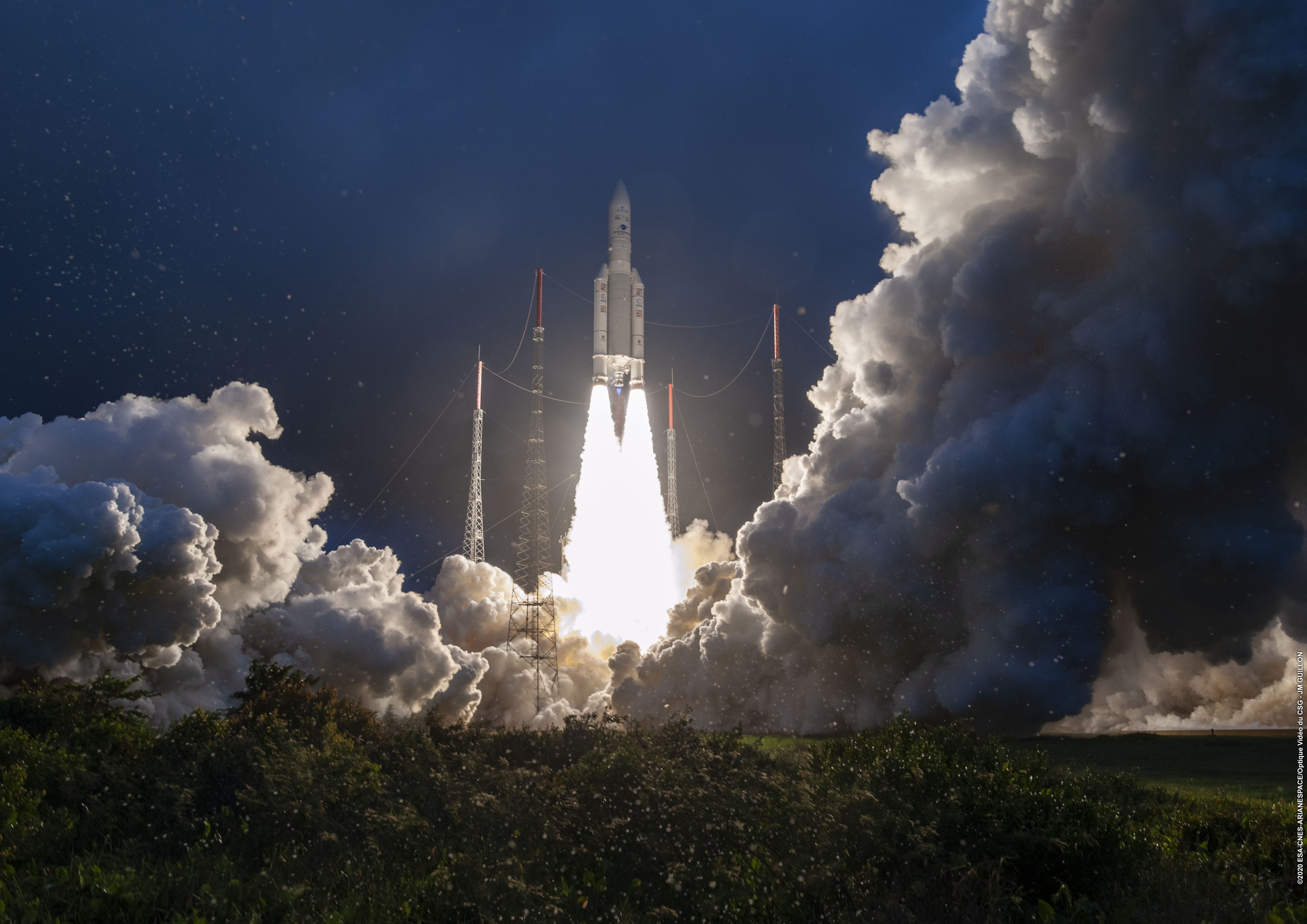Launch conditions together with the need to operate at high power levels presented a particular challenge when Airbus Defence and Space engineers – under the ARTES Competitiveness & Growth programme – set about developing a new series of Ku-band antenna feed chains.
Rocket launches generate a significant amount of vibrations. Shock waves are formed by the collision of the supersonic exhaust with the ambient air producing typical noise levels of around 170-200 decibels (the human pain threshold is about 120 decibels; and, if you stand next to it, a sound of 165 decibels will actually ignite your hair*).
Airbus Defence and Space, headquartered in Ottobrunn, Germany, wanted to create Ku-band feed chains that can reach a capability of close to 8kW microwave power handling. But the feed chains had to rise to the challenge of the launch environment as well as demonstrate improved performance once in orbit.
High-power feed chains are a key element in the antenna systems of modern telecommunication satellites. The new product  had been envisaged in response to the demand for better performance with a lower price tag.
had been envisaged in response to the demand for better performance with a lower price tag.
“Airbus developed Ku-band high-power feed chains in early 2000 with the support of ARTES. These very successful, earlier Ku-band feed components were in need of increased radio frequency (RF) power, extended frequency ranges and improved in-band performance to meet current market expectations,” says Christoph Ernst, Technical Officer at ESA.
To cover the entire gamut of high power Ku-band applications, Airbus developed three feed chains offering different frequency band and signal polarisation options.
Put to the test
“The particular challenges for this type of hardware are the severe environmental conditions during launch – as components inside the hardware are susceptible to shock and vibrations – in combination with the design features needed to achieve the very high power operation in orbit,” says Ernst.
“Along with the usual challenge of achieving excellent RF performance significant efforts were undertaken to reduce the Ohmic losses, and thus to reduce the dissipated power (heat) which is otherwise wasted and needs to be radiated into space to control the spacecraft temperature.”
All three feed chains and polariser devices passed rigorous thermal, mechanical and RF tests with flying colours, meaning that Airbus has been able to deliver a suitable Ku-band feed product for practically all high-power satellite telecommunication antennas.
“The sales figures of the new FSS Tx/Rx product follow seamlessly the footsteps and success of its predecessor. In the first three years over 25 units have been sold, exceeding our original expectations,” says Christian Hartwanger, Airbus Defence and Space, Germany.
*According to Science Staff from AAAS (American Association for the Advancement of Science)





